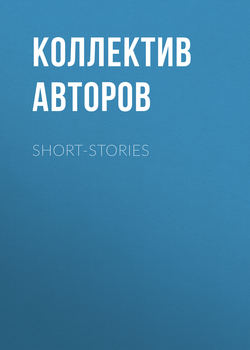Читать книгу Short-Stories - Коллектив авторов, Ю. Д. Земенков, Koostaja: Ajakiri New Scientist - Страница 3
QUALITIES OF THE SHORT-STORY
ОглавлениеIt was not until well along in the nineteenth century that any one attempted to define the short-story. The three quotations given here are among the best things that have been spoken on this subject.
"The right novella is never a novel cropped back from the size of a tree to a bush, or the branch of a tree stuck into the ground and made to serve for a bush. It is another species, destined by the agencies at work in the realm of unconsciousness to be brought into being of its own kind, and not of another," – W.D. Howells, North American Review, 173:429.
"A true short-story is something other and something more than a mere story which is short. A true short-story differs from the novel chiefly in its essential unity of impression. In a far more exact and precise use of the word, a short-story has unity as a novel cannot have it… A short-story deals with a single character, a single event, a single emotion, or the series of emotions called forth by a single situation. – Brander Matthews, The Philosophy of the Short-Story.
"The aim of a short-story is to produce a single narrative effect with the greatest economy of means that is consistent with the utmost emphasis." – Clayton Hamilton, Materials and Methods of Fiction.
The short-story must always have a compact unity and a direct simplicity. In such stories as Björnson's The Father and Maupassant's The Piece of String this simplicity is equal to that of the anecdote, but in no case can an anecdote possess the dramatic possibilities of these simple short-stories; for a short-story must always have that tensity of emotion that comes only in the crucial tests of life.
The short-story does not demand the consistency in treatment of the long story, for there are not so many elements to marshal and direct properly, but the short-story must be original and varied in its themes, cleverly constructed, and lighted through and through with the glow of vivid imaginings. A single incident in daily life is caught as in a snap-shot exposure and held before the reader in such a manner that the impression of the whole is derived largely from suggestion. The single incident may be the turning-point in life history, as in The Man Who Was; it may be a mental surrender of habits fixed seemingly in indelible colors in the soul and a sudden, inflexible decision to be a man, as in the case of Markheim; or it may be a gradual realization of the value of spiritual gifts, as Björnson has concisely presented it in his little story The Father.
The aim of the short-story is always to present a cross-section of life in such a vivid manner that the importance of the incident becomes universal. Some short-stories are told with the definite end in view of telling a story for the sake of exploiting a plot. The Cask of Amontillado is all action in comparison with The Masque of the Red Death. The Gold-Bug sets for itself the task of solving a puzzle and possesses action from first to last. Other stories teach a moral. Ethan Brand deals with the unpardonable sin, and The Great Stone Face is our classic story in the field of ideals and their development. Hawthorne, above all writers, is most interested in ethical laws and moral development. Still other stories aim to portray character. Miss Jewett and Mrs. Freeman veraciously picture the faded-put womanhood in New England; Henry James and Björnson turn the x-rays of psychology and sociology on their characters; Stevenson follows with the precision of the tick of a watch the steps in Markheim's mental evolution.
The types of the short-story are as varied as life itself. Addison, Lamb, Irving, Warner, and many others have used the story in their sketches and essays with wonderful effect. The Legend of Sleepy Hollow is as impressive as any of Scott's tales. The allegory in The Great Stone Face loses little or nothing when compared with Bunyan's Pilgrim's Progress. No better type of detective story has been written than the two short-stories, The Murders in the Rue Morgue and The Purloined Letter. Every emotion is subject to the call of the short-story. Humor with its expansive free air is not so well adapted to the short-story as is pathos. There is a sadness in the stories of Dickens, Garland, Page, Mrs. Freeman, Miss Jewett, Maupassant, Poe, and many others that runs the whole gamut from pleasing tenderness in A Child's Dream of a Star to unutterable horror in The Fall of the House of Usher.
The short-story is stripped of all the incongruities that led Fielding, Scott, and Dickens far afield. All its parts harmonize in the simplest manner to give unity and "totality" of impression through strict unity of form. It is a concentrated piece of life snatched from the ordinary and uneventful round of living and steeped in fancy until it becomes the acme of literary art.
